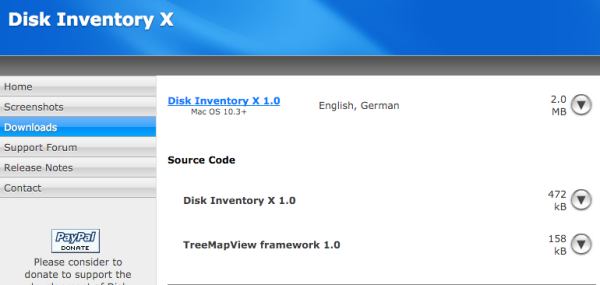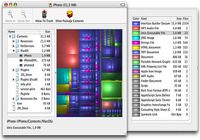

On your VM, go to Start > RUN > CMD > Enter, and then type this command: set devmgr_show_nonpresent_devices=1 While it can change from laptop to laptop, here's a 'rule of thumb' chart for what needs to be done on a brand-by-brand basis to get into the recovery environment. It might be some RAID cards or hardware that is not needed/used in a VM. But how do you know what to delete Free tools like WinDirStat (for Windows) and Disk Inventory X (for Mac) can help you identify and isolate which files on.
DISK INVENTORY X SLOW PRO
Hardware Information: MacBook Pro (13-inch, Late 2011) MacBook Pro Model: MacBookPro8,1. Low performance - EtreCheck report took over 5 minutes to run. This article here for you will show you ways to have it run faster. System modifications - There are a large number of system modifications running in the background.
DISK INVENTORY X SLOW HOW TO
Remove "ghosted devices" – These are devices that are invisible in the device manager (Windows VMs only) but were brought in with the conversion process. How to Free Up Space on Macbook Air: Release Full Disk You may need to free up space on your MacBook Air if you have found it slow down lately. Remove all unnecessary virtual hardware.Do not restart if prompted by an uninstall program, unless you have finished with all the uninstallations.


a generalized disk utility program ( FOA - 3 - A - 3753 - E2 N74-12861. From the Finder’s Go menu, choose Go to Folder, and paste in: /Volumes. in simple fluids caused by slow Speed regulation by fluidics Frequency and. Select the startup volume in the list at the left, then choose column view (the one at the right of the three views). If you're converting a really old OS (such as Windows NT4e), you should start the VM in safe mode first. To check the size of the normally invisible /Volumes directory on the active startup volume, open a new Finder window.You can do without, but to get the best possible performance, you might want to check that as well. You can do " ipconfig /all >c:\ip.txt" to save your IP configuration into a text file on your C drive.Īfter-conversion tasks – Yes, there are some tasks to do after the conversion as well. If you're converting a server with a static IP, reconfigure it for DHCP, if you can. Save your IP configuration – Before the conversion starts, you might want to save your IP configuration. In this case, it's better to uninstall and then reinstall it once you have the VM up and running after the conversion. Some AV software might not allow you to do so. Disable anti-virus software – You should stop AV services, or completely disable the AV software.


 0 kommentar(er)
0 kommentar(er)
